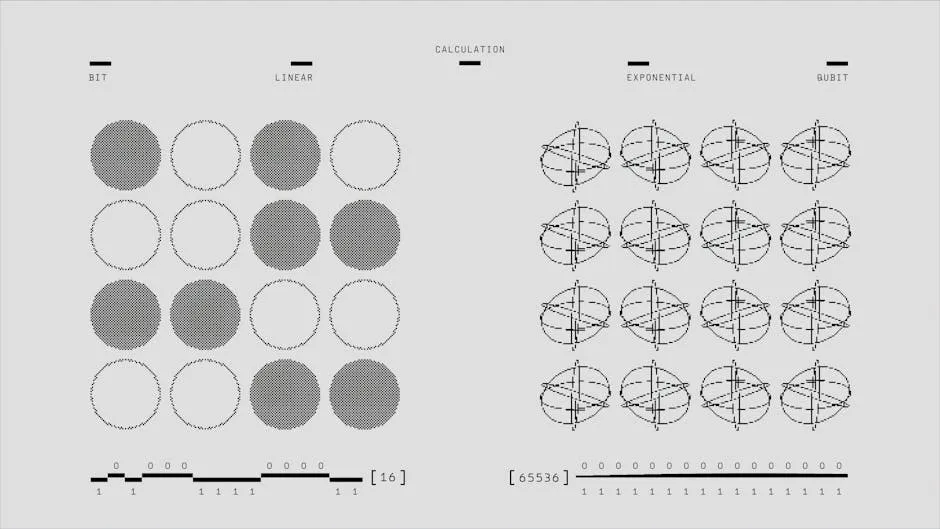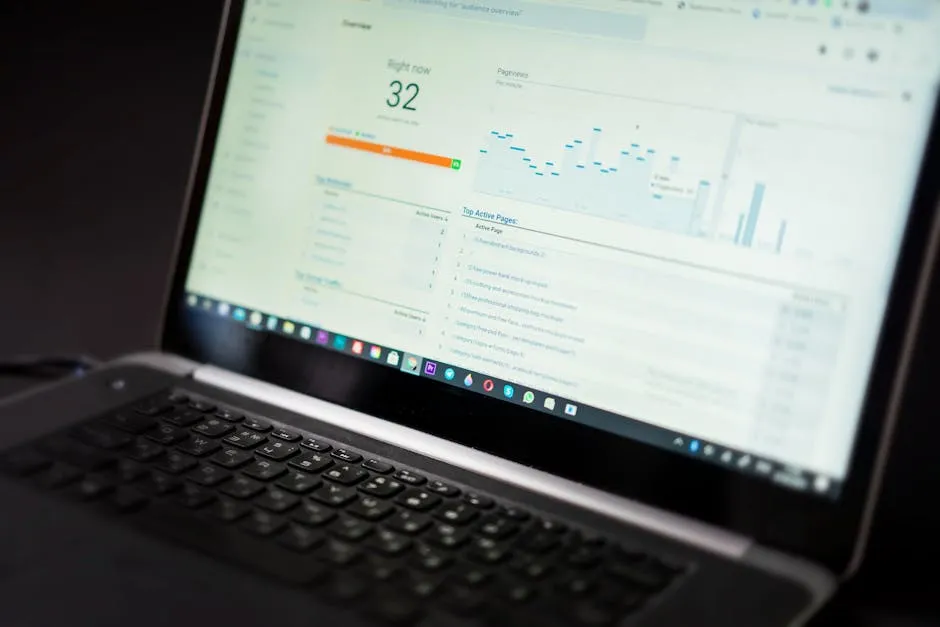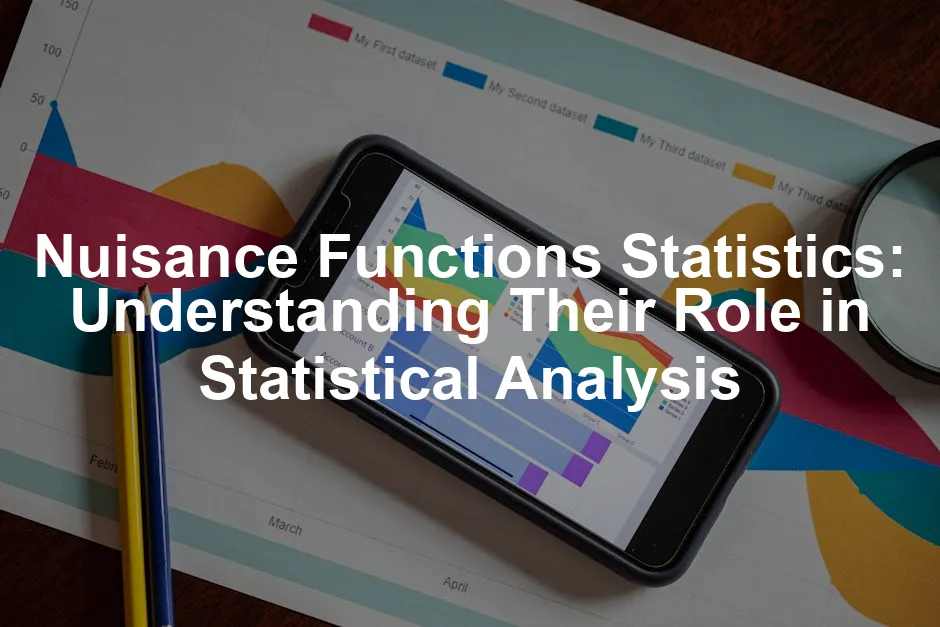Introduction
Nuisance functions are essential components in statistical modeling. They are parameters that, while not the focus of analysis, must be accounted for to accurately estimate parameters of interest. Think of them as the supporting actors in a play—vital to the plot but not the star of the show. And speaking of stars, if you want to delve deeper into the world of statistics, you might want to check out “The Elements of Statistical Learning” by Trevor Hastie, Robert Tibshirani, and Jerome Friedman.
Nuisance parameters differ from primary parameters of interest. The latter directly relate to the hypotheses being tested or the questions being answered. Nuisance parameters, on the other hand, can introduce complexity and variability into models, complicating our analyses without contributing direct value to the research questions. If you’re looking to get a solid foundation on the topic, “Statistical Inference” is a classic you shouldn’t miss.
These functions play a significant role in various statistical methodologies. Inference, regression analysis, and causal mediation all benefit from the inclusion of nuisance functions. For instance, in regression analysis, the variance of a response variable might be treated as a nuisance parameter. By accounting for it, researchers can improve the precision of their estimates of the coefficients of interest. Similarly, in causal mediation analysis, nuisance functions can help control for confounding variables, ensuring that the mediation effect is accurately estimated.
The objective of this article is to explore nuisance functions in depth. We will discuss their implications in statistical analysis, providing insights into how they affect model performance and interpretation. By understanding nuisance functions better, statisticians can enhance their analyses and ensure more accurate results.

Understanding Nuisance Functions
Definition and Explanation
Nuisance functions are parameters that must be estimated but are not the primary focus of a statistical analysis. They can be viewed as background noise—necessary for the completeness of a model but not of direct interest. For example, when studying the average height of people in a city, the variance in height might be considered a nuisance parameter. While it helps complete the picture, the main goal is to estimate the average height.
These functions become essential when they interact with parameters of interest. Their presence can influence the estimates and lead to biased results if not appropriately accounted for. The difference between nuisance functions and primary parameters often hinges on the research question. If the research focuses solely on one aspect, other related parameters may become nuisances. If you’re interested in further exploration, “Applied Linear Statistical Models” by Kutner, Nachtsheim, and Neter might be your next read.
Importance in Statistical Modeling
Nuisance functions are crucial for reliable estimations and valid inference. Ignoring them can lead to substantial errors. For instance, in normal distributions, the variance is a classic example of a nuisance parameter. When estimating the mean, if the variance is not correctly considered, the results could misrepresent the true average.
Consider a study that measures pain relief treatments. Researchers might control for temperature as a nuisance variable. While temperature may not interest them directly, failing to account for it could distort the treatment effects being measured. By including it as a nuisance parameter, the analysis can more accurately reflect the treatments’ effectiveness. And remember, for a light-hearted take on statistics, “How to Lie with Statistics” by Darrell Huff is a must-read!
Understanding how to manage nuisance parameters is crucial for accurate statistical analysis. For a deeper exploration, check out statistical inference for estimation in data science colorado.
In conclusion, nuisance functions are not just statistical fluff; they are integral to effective modeling. Their role in ensuring accurate estimations and valid conclusions cannot be overstated. By understanding and managing these functions, statisticians can achieve more reliable results and enhance the quality of their analyses. And if you’re looking for a solid reference, “Naked Statistics: Stripping the Dread from the Data” by Charles Wheelan is a fantastic read.

Theoretical Background
Nuisance Parameters vs. Interest Parameters
In the world of statistics, we often encounter two types of parameters: nuisance parameters and parameters of interest. Think of parameters of interest as the stars of the show, while nuisance parameters play the supporting roles. But what exactly do these terms mean?
Parameters of interest are those that directly relate to the research question or hypothesis being tested. They are the heroes of our story. For example, if you’re studying the effect of a new drug on blood pressure, the mean difference in blood pressure between the treatment and control groups is a parameter of interest. It’s what you want to measure and understand. To dive deeper into regression analysis, check out “Regression Analysis by Example” by Samprit Chatterjee and Ali S. Hadi.
On the flip side, nuisance parameters are those that we need to account for but don’t directly care about. They often introduce variability but don’t answer our primary questions. Continuing with our drug study example, the variance of blood pressure measurements across participants could be a nuisance parameter. While it’s crucial for getting accurate estimates of the mean difference, it’s not what you’re primarily interested in.
Interestingly, parameters can shift roles. A parameter that’s a nuisance today might become a parameter of interest later. For instance, suppose initial analyses ignored the variance of blood pressure. But if later research shows that variance varies significantly across different demographics, it suddenly becomes crucial to the analysis. In this case, the variance transitions from being a nuisance to a parameter of interest. This fluidity highlights the importance of understanding the context of your analysis.
The Impact of Nuisance Functions on Inference
Nuisance parameters can significantly impact statistical inference. They can influence hypothesis testing, confidence intervals, and even effect size estimates. If these parameters are not handled properly, they can lead to misleading conclusions.
For example, imagine conducting an experiment to evaluate the effectiveness of a new teaching method. If you fail to account for variations in student performance, your results could inaccurately reflect the method’s effectiveness. The unaccounted variation acts as a nuisance parameter, clouding the true relationship between teaching method and student outcomes. To further your understanding of data analysis, consider picking up “Python for Data Analysis” by Wes McKinney.
Optimality conditions play a pivotal role here. These conditions dictate the best way to estimate parameters while minimizing the impact of nuisance parameters. By applying optimal methods, statisticians can ensure that their estimates of parameters of interest remain unbiased and efficient. In the context of maximum likelihood estimation, for example, ignoring nuisance parameters can inflate the standard errors and lead to wider confidence intervals, reducing the reliability of the study conclusions.
Moreover, using techniques such as conditional likelihood can help mitigate the effects of nuisance parameters. This approach focuses on the distribution of the data given the nuisance parameters, allowing for more accurate inferences about the parameters of interest. If you’re interested in Bayesian approaches, “Statistical Modeling in a Bayesian Setting” by Andrew Gelman is a great resource.

Mathematical Representation
Mathematical representations of nuisance functions often appear in models like linear regression and generalized linear models (GLM). In a linear regression model, consider the equation:
Y = β0 + β1 X + ε
Here, Y is the response variable, X is the predictor, and ε represents the error term. The variance of ε can be treated as a nuisance parameter. While estimating the coefficients β0 and β1 is the main focus, understanding the variance helps improve the reliability of these estimates.
In generalized linear models, nuisance parameters often take the form of parameters that define the distribution of the response variable. For instance, in a logistic regression model, the response variable might be binary, and the model would be specified as:
log( p / (1 - p) ) = β0 + β1 X
Here, the variance structure might depend on additional parameters, which, while necessary for model specification, are not of primary interest. If you’re looking to explore more about statistical learning, “The Art of Statistics: Learning from Data” by David Spiegelhalter is highly recommended.
Nuisance functions can complicate these models. However, by carefully incorporating them into the analysis, statisticians can enhance the accuracy of their parameter estimates and the validity of their conclusions.

In summary, recognizing the role of nuisance parameters is vital for effective statistical modeling. By understanding their implications, researchers can navigate the complexities of data analysis and derive more meaningful insights from their studies.
Methods for Handling Nuisance Functions
Likelihood-Based Approaches
Likelihood-based methods are a popular way to handle nuisance parameters in statistical analysis. These approaches rely on the likelihood function, which summarizes the probability of observing the data given a set of parameters. When applied to nuisance parameters, researchers often treat them as “fixed” or “known” during initial inference about parameters of interest.
For example, in a clinical trial evaluating a new drug’s effectiveness, researchers may be interested in the treatment effect while considering patient age and gender as nuisance parameters. In this context, the likelihood function combines both the treatment effect and the nuisance parameters. Adjustments to the likelihood function help ensure that the estimates for the treatment effect remain unbiased. If you need help with the underlying theory, “Statistics Done Wrong: The Woefully Complete Guide” by Alex Reinhart offers insightful perspectives.
One common likelihood-based technique is the use of marginal likelihood, which integrates out the nuisance parameters. This means instead of estimating them outright, researchers focus on the parameters of interest while acknowledging the effect of nuisance parameters through integration. For instance, in a study analyzing blood pressure changes, one might model the variance in blood pressure as a nuisance parameter. The marginal likelihood would summarize how this variance affects the overall results without needing to estimate it directly.

Integration and Marginalization Techniques
Integration and marginalization are powerful techniques for addressing nuisance parameters. By integrating over nuisance parameters, researchers can simplify their models and focus on the parameters of interest. This process effectively “removes” nuisance parameters from the equation, allowing for clearer inference.
Consider a simple example involving the normal distribution. Suppose we want to estimate the mean of a population but have an unknown variance, which is a nuisance parameter. We can use the following integral to find the marginal likelihood of the mean:
L(μ) = ∫ L(μ, σ2) dσ2
Here, L(μ, σ2) represents the likelihood function that includes both the mean and the variance. By integrating over the variance, we obtain a likelihood that focuses solely on the mean estimate.
In practice, this marginalization technique is useful in a variety of real-world situations. For instance, researchers studying the effectiveness of different teaching methods might need to account for variations in student performance (a nuisance parameter). By integrating over these variations, they can obtain a clearer picture of how teaching methods influence learning outcomes. To support your data analysis, “The Data Warehouse Toolkit” by Ralph Kimball offers excellent insights.

Estimating Functions
Estimating functions offer another robust method for addressing nuisance parameters. These functions provide a way to derive estimates of parameters of interest while taking nuisance parameters into account. They do this by establishing a relationship between the parameters of interest and the nuisance parameters through a set of equations.
One effective approach is the two-stage estimation method. In this process, the first stage estimates the nuisance parameters, while the second stage uses these estimates to refine the parameters of interest. This method can significantly enhance the efficiency of parameter estimation.
For example, in causal mediation analysis, researchers may want to estimate the direct and indirect effects of a treatment. Nuisance functions, such as baseline covariates, can complicate this estimation. A two-stage method might first estimate the influence of those covariates before using them to assess the treatment effects in the second stage. This approach not only simplifies the process but also improves the accuracy of the estimates. To further enhance your understanding, “Practical Statistics for Data Scientists” by Peter Bruce and Andrew Bruce is a great resource.
The benefits of using estimating functions are numerous. They provide a direct way to incorporate nuisance parameters into the analysis, reducing bias and improving the precision of estimates. Moreover, they can be particularly useful in complex models where traditional methods struggle to account for multiple nuisance parameters effectively.
In summary, likelihood-based approaches, integration techniques, and estimating functions are all effective strategies for managing nuisance parameters in statistical analyses. By employing these methods, statisticians can enhance the reliability of their estimates and ultimately improve the quality of their research findings.

Real-World Applications
Case Studies
Nuisance functions are not just theoretical constructs; they play a crucial role in various practical scenarios. Let’s explore a couple of significant case studies.
Example 1: Medical Studies Involving Pain Relief
In the realm of medical research, understanding pain relief treatments is critical. Imagine a study where researchers are examining how different treatments alleviate pain. A fascinating element is the temperature at which pain stimuli are applied. While the researchers are interested in the efficacy of pain relief methods, they must include temperature as a nuisance parameter.
Why? Higher temperatures can inherently affect how pain is perceived. If not accounted for, temperature variations could lead to skewed results regarding the treatment’s effectiveness. By treating temperature as a nuisance function, researchers can more accurately isolate the treatment’s impact, ensuring that the observed effects are truly due to the treatments and not influenced by external temperature variations. This approach enhances the reliability of findings, ultimately leading to better pain management protocols. And for those late-night data crunching sessions, don’t forget to grab a good coffee maker to keep your energy up!

Example 2: Environmental Studies with Spatio-Temporal Models
Environmental studies often involve complex interactions over time and space. Consider a study investigating the impact of a particular chemical on fish populations in a unique lake environment. The chemical’s distribution is affected by various factors, including water flow and temperature—both of which are nuisance parameters.
In this case, researchers must build a robust spatio-temporal model. By acknowledging the chemical’s spatial distribution and its temporal variations, scientists can better understand its interaction with the fish species. Here, nuisance functions help eliminate bias in estimating the relationship between the chemical and the fish populations. This meticulous modeling leads to more informed environmental policies and conservation strategies. Plus, for those who love to visualize data, a data visualization poster could spark some creativity!
Implications in Causal Mediation Analysis
Nuisance functions also carry significant implications for causal inference, particularly in mediation analysis. Researchers often seek to understand how a treatment affects an outcome through a mediator. However, nuisance functions can muddy the waters.
When analyzing causal relationships, ignoring nuisance parameters can lead to biased estimates of direct and indirect effects. Recent advancements propose new methodologies to tackle this challenge. For instance, employing a two-stage estimation strategy allows researchers to account for nuisance functions systematically.
In the first stage, researchers can estimate the nuisance parameters based on their influence on the bias of the mediation functional. This nuanced approach helps in refining estimates of the parameters of interest. The second stage focuses on the primary causal relationships, ensuring they are not distorted by unaccounted nuisance functions.
By employing these new methodologies, researchers can bolster the accuracy of their causal inferences. This is particularly crucial in fields like health sciences and social research, where understanding the true impact of interventions can lead to more effective policies and treatments. And for those long hours of analysis, consider investing in an ergonomic office chair for comfort.

Best Practices in Managing Nuisance Functions
Recommendations for Statisticians
Managing nuisance functions effectively is crucial for accurate statistical modeling. Here are some practical tips for statisticians:
- Identify Early: Recognize potential nuisance parameters during the study design phase. This proactive approach helps in crafting a more robust analysis plan.
- Exploratory Data Analysis (EDA): Conduct thorough EDA to identify patterns and relationships. This step allows statisticians to discern which parameters might act as nuisances and how they could impact the analysis.
- Model Carefully: When building models, incorporate nuisance parameters appropriately. Use techniques like marginalization or integration to account for them without overly complicating the model.
- Iterate and Validate: After initial analysis, revisit your model. Validate results by checking how the inclusion or exclusion of nuisance parameters affects estimates. This iterative process ensures robustness in findings.
- Communicate Clearly: When reporting results, clearly communicate the role of nuisance parameters. This transparency helps others understand the analysis’s nuances and implications.
By following these recommendations, statisticians can enhance their analyses, leading to more accurate and reliable conclusions. Understanding and managing nuisance functions is not merely a statistical exercise; it is essential for producing quality research that withstands scrutiny. And for those who love to jot down notes or brainstorm ideas, a high-quality notebook can be a game-changer!

Tools and Software
When it comes to modeling nuisance functions, the right tools can make all the difference. Here are some top statistical software options that shine in this area:
- R: This open-source software is a favorite among statisticians. R offers numerous packages specifically designed for handling nuisance parameters. Packages like
nlmeandlme4are fantastic for mixed-effects models, allowing you to incorporate both fixed and random effects effortlessly. For a comprehensive guide, refer to ap statistics formula sheet. - Python: With libraries like
statsmodelsandscikit-learn, Python provides robust options for statistical modeling. These libraries facilitate the inclusion of nuisance parameters in regression models and machine learning algorithms. Plus, Python’s versatility makes it a great choice for data manipulation and visualization. - SAS: Known for its powerful analytics capabilities, SAS offers tools for advanced statistical modeling. Its
PROC MIXEDprocedure is particularly useful for analyzing data with both fixed and random effects, making it easier to account for nuisance parameters. - Stata: This software is particularly user-friendly for those who prefer a point-and-click interface. Stata’s mixed models allow you to model nuisance parameters effectively, and its extensive documentation makes it accessible for beginners.
- MATLAB: While it may not be the first choice for everyone, MATLAB is excellent for custom statistical modeling. It offers substantial flexibility when working with nuisance parameters, especially in simulations and complex data analyses.
Equipping yourself with these tools can significantly enhance your ability to model nuisance functions effectively. Embrace the power of these programs, and watch your statistical analyses flourish! And for those who love to stay organized, a desk organizer can be a lifesaver.

Conclusion
Understanding nuisance functions is crucial for robust statistical analysis. These parameters, while not the focus of your research, can significantly affect your results if neglected. Throughout this article, we explored their definitions, roles, and methodologies for managing them effectively.
Nuisance functions help in achieving more accurate estimations and valid inferences. Ignoring them can lead to skewed results, impacting your research’s credibility. For instance, in regression analyses, failing to account for variance can misrepresent relationships between variables. Similarly, in causal mediation analysis, overlooking nuisance parameters can distort the effects being estimated. If you want to ensure you’re on the right track, “Data Science for Business” by Foster Provost and Tom Fawcett is a great resource.
The importance of nuisance functions extends beyond theoretical discussions. Their practical implications in real-world studies—such as medical research and environmental studies—highlight their necessity. By recognizing and addressing these parameters, researchers can enhance the reliability of their findings.
As you apply this knowledge in your own research, remember to identify nuisance parameters early in your analysis. Utilize appropriate statistical tools and techniques to manage them effectively. This proactive approach will improve the precision of your estimates and the validity of your conclusions.
In conclusion, nuisance functions are not mere statistical afterthoughts. They are integral to producing quality research. By grasping their significance, you can elevate your statistical modeling efforts and contribute to a deeper understanding of your subject matter. Embrace the challenge, and let nuisance functions guide you toward clearer insights and more accurate analyses. And for those who love to keep track of their health during data projects, a fitness tracker is a great investment!

FAQs
What are nuisance parameters?
Nuisance parameters are variables in statistical models that you must account for but do not directly relate to the primary research question. They can introduce variability in the data, affecting the analysis without being of specific interest.
Why are nuisance parameters important in statistical analysis?
Nuisance parameters improve the reliability and validity of statistical inference. By incorporating them into models, researchers can reduce unaccounted variation, leading to more accurate estimates and better hypothesis testing.
Can any parameter be a nuisance parameter?
Yes, any parameter can be classified as a nuisance parameter, depending on the context of the analysis. If it does not directly affect the primary research question but still impacts the estimation process, it can be treated as a nuisance.
How do I handle nuisance parameters in my analysis?
To manage nuisance parameters, consider using methods like marginalization, conditional modeling, or estimating functions. These techniques allow you to account for nuisance parameters without complicating the analysis.
What resources are available for learning more about nuisance functions?
For further reading, consider exploring statistical textbooks, online courses, and academic articles. Some recommended resources include ‘Statistical Inference’ by Casella and Berger and ‘Applied Regression Analysis’ by Draper and Smith. Online platforms like Coursera and edX also offer courses on statistical modeling that cover nuisance parameters in depth.
Please let us know what you think about our content by leaving a comment down below!
Thank you for reading till here 🙂
All images from Pexels




